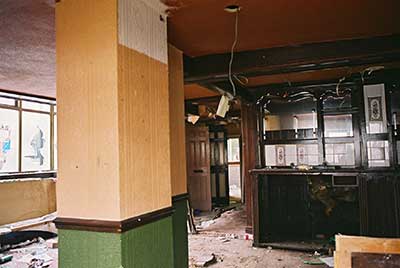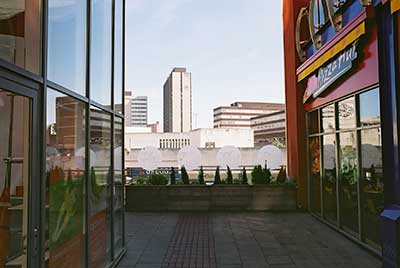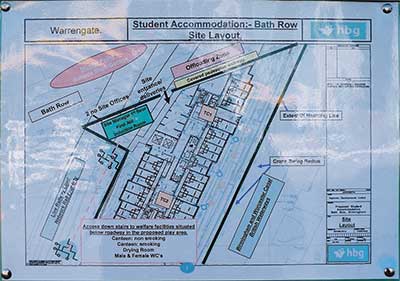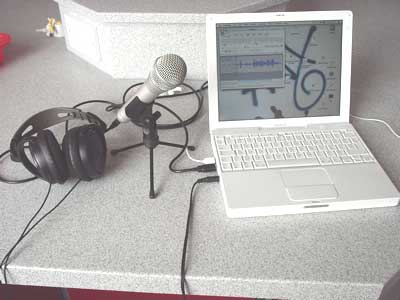Download an audio MP3 that explains prime factors in 5 minutes, with one example. [1.6 Mb, 48Kb/sec mono]. Students are given terms to look up in a textbook and to search the Web for at the end of the recording. Most people will need a visual cue for the repeated division calculation.
The speech was recorded in the kitchen, with better results than the ‘market maths’ audio file, although the echo is obvious. Two takes and it was finished, I do stumble over a list of factors at one point, but it is a minor glitch and not worth the time to re-record or edit out. The 48Kb/sec bitrate gives reasonable quality in return for a file size of around 1.6 Mb for just over 5 minutes of time.
The script
Prime factors
This fountain sounds regular but the water does not repeat exactly each cycle, there is some change. A lot of processes in nature sort of repeat but not exactly. Prime numbers give us some insight into systems like that. Large prime numbers multiplied together also protect the security of your bank account using public key encryption.
Most Maths textbooks will define a prime number as ‘a number with exactly two factors, itself and one’. Six has factors of one, two, three and six and it can’t be a prime number. The number seven has factors of one and seven only so it is a prime number.
A more visual way of looking at the factors of a number is to imagine arranging small stones in different shapes, so six can be arranged as one row of six stones or as two rows of three stones. Twelve can be arranged as one row of twelve stones, two rows of six stones or three rows of four stones. Some numbers, like seven, can only be arranged as one row of stones, and these are the prime numbers.
The first few prime numbers are two, three, five, seven, eleven, thirteen and seventeen. One isn’t a prime number as one has only one factor. Two is the only even prime number.
Numbers that are not prime are called composite numbers. Any composite number is made by multiplying together a certain list of prime numbers. For example, twelve is made from two times two times three, so the prime numbers two, two and three are the ‘signature’ of twelve. We call two, two and three the ‘prime factors’ of twelve. This is confusing as the prime factors are very different to the factors of twelve like four and six. You just have to keep the two ideas separate.
To find the prime factors of a composite number, you try to divide the number by each of the prime numbers in turn starting with two. If a prime number can divide the number with no remainder then it is a prime factor.
An example will help. Remember that the first few prime numbers are two, three, five, seven, eleven. Suppose I want to find the prime factors of ninety. Ninety is an even number, so I divide ninety by two to get forty-five. Two is a prime factor of ninety so I make a note of it, and then I try to divide forty five by a prime number. Three goes into forty-five fifteen times, so I have three as a prime factor to add to my list. Fifteen divided by three again gives five, itself a prime number, so these are my last two prime factors.
Ninety is given by multiplying two by three by three again and then by five. As three appears twice, we can say that the list is two times three squared times five, using index notation for the repeated multiplication by three.
Your turn: find the prime factors of 300. [ 15 seconds ]. I get two squared times three times five squared.
Look up prime factors in the index of any gcse textbook to find more examples. You will also see ways of setting out the calculations on the page. Look for a section on ‘factor trees’ if you have a visual orientation.
Search the Web for the phrase ‘the music of the primes’, this is the title of a book, if you are interested in the uses of prime numbers.





